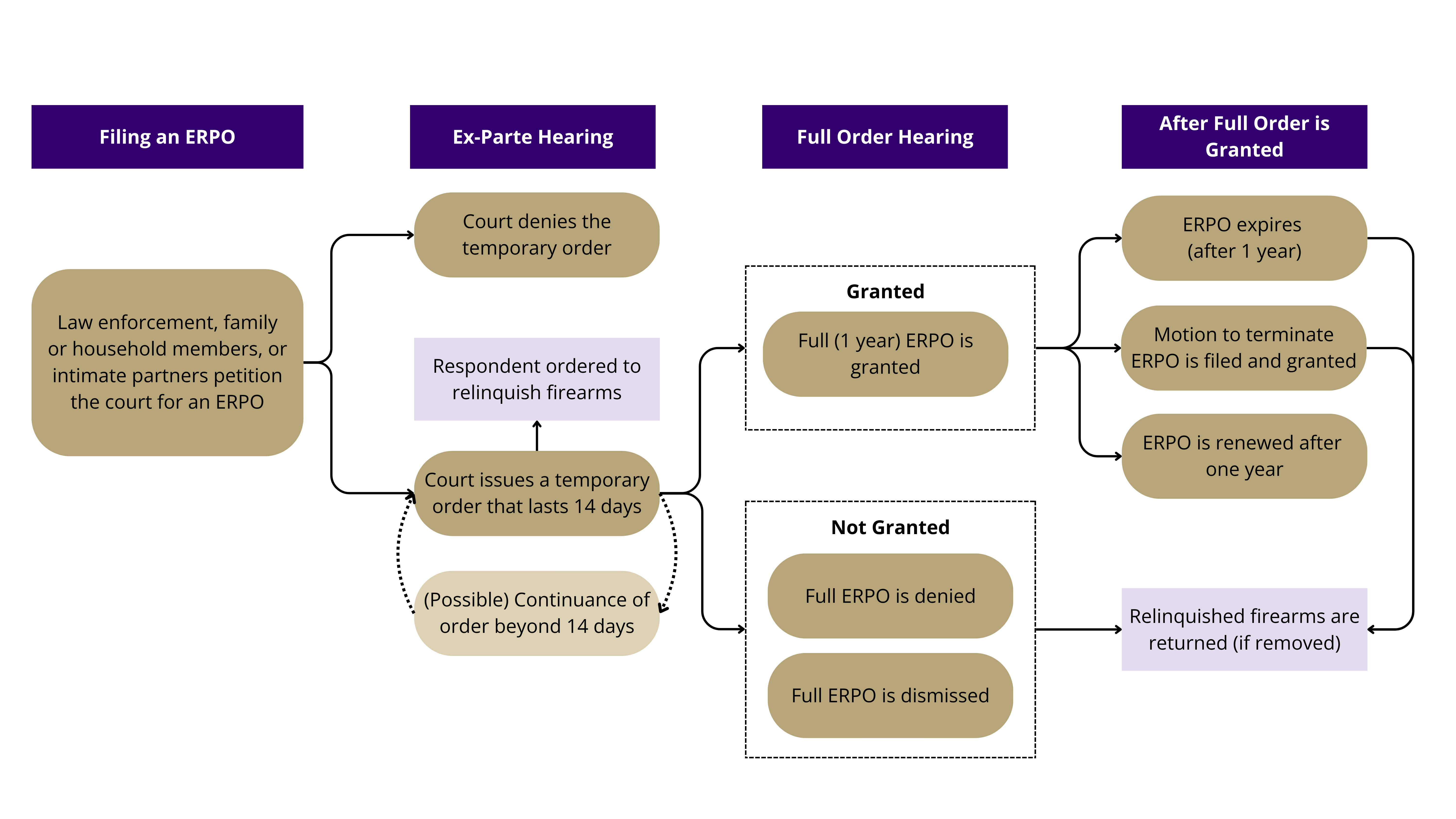View Source
About this data: This dashboard was created by the University of Washington Firearm Injury & Policy Research Program (FIPRP) for ERPO data from Washington State. The data in this dashboard cover all ERPO petitions filed at the ex-parte level from December 2016 through December 2023. Researchers collected ERPO data from multiple sources, including but not limited to, individual courts where petitions were filed and the State Administrative Office of the Courts. Each has their own procedures for data collection and availability. ERPO data are not currently being clearly and consistently collected statewide, limiting this dashboard to data about ERPOs granted at the temporary level.
The data are provided in aggregate to summarize the type of threatened harm and who was at risk of harm; how many temporary and full ERPO petitions were granted by county and year; if denied, the reasons for denial; whether the petitioner was law enforcement, family or household member, or an intimate partner; respondent demographics by age, sex, race/ethnicity, and veteran/military status. Our goal is to continue collecting ERPO data and providing more information as new data becomes available.
Key Terms
Petitioner: The party who completes and files the ERPO petition.
Respondent: The party who the ERPO is completed on behalf of.
Ex-parte: Temporary order (typically 14 days)

1. Eligible petitioners (law enforcement, family or household members, or intimate partners) complete a petition for an ERPO and file the petition in the county where the petitioner or respondent resides.
2. The petitioner appears for a temporary hearing, where the judge grants or denies a Temporary Extreme Risk Protection Order Without Notice.
3. If granted, the respondent is given notice of temporary order and the full hearing date. Respondents must also immediately surrender their firearm(s) and concealed pistol license(s), and are prohibited from purchasing new firearms.
4. The full hearing occurs at least two weeks after the temporary order is granted. If the petitioner does not appear at the hearing, the ERPO will be dismissed. If the petitioner appears at the hearing, the judge will decide whether the ERPO will be granted or denied. If an ERPO is denied or dismissed, the respondent’s firearms are returned to them.
5. If the ERPO is granted at the full hearing, it lasts for one year.
6. Within the year that the ERPO is in effect, the respondent may file one motion to terminate the ERPO which is reviewed by a judge. When the ERPO expires at the end of one year, the petitioner may motion for a renewal.